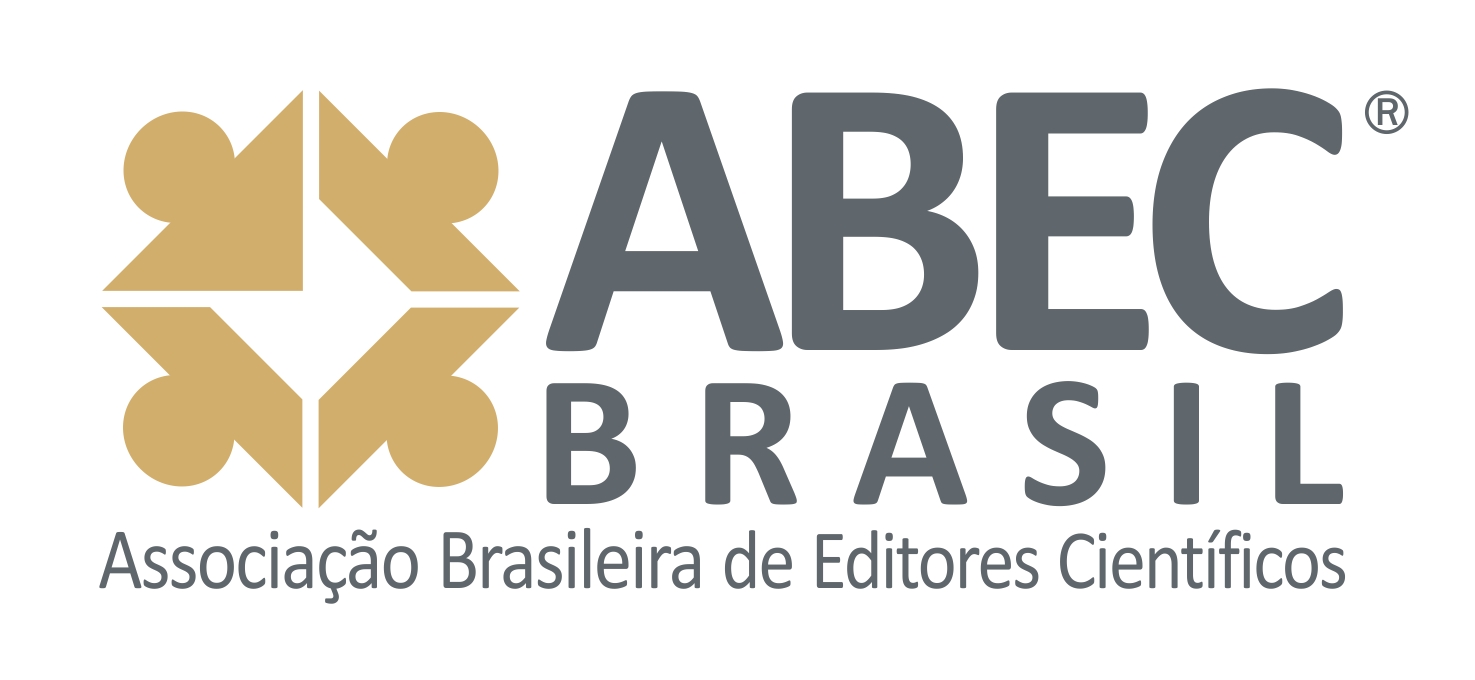MODELOS DE CRESCIMENTO DA CANA-DE-AÇÚCAR E SUA PARAMETRIZAÇÃO – REVISÃO
DOI:
https://doi.org/10.37856/bja.v87i1.16Resumo
Em agronomia, modelos de simulação têm sido utilizados como ferramenta de pesquisa, possibilitando organizar o entendimento das respostas das plantas a diferentes ambientes e, consequentemente, predizer a produtividade das culturas. Modelos de crescimento de cultura usualmente possuem alto nÃvel de complexidade apresentando grande número de parâmetros envolvidos com obtenções, em muitos casos, dependendo de grande número de dados experimentais. Diante da incontestável importância da cana-de-açúcar no cenário nacional o desenvolvimento e a adoção de ferramentas, como os modelos de previsão de produtividade usados na criação de cenários visando planejar e ou dimensionar a produção são fundamentais. Esse estudo tem como objetivo abordar os principais modelos utilizados para a simulação do crescimento da cana-de-açúcar bem como fornecer informações a respeito dos principais parâmetros comumente utilizados nesses modelos. ÂReferências
ARAUJO, M. I. M. 1993. Zoneamento da produtividade potencial climática da cana-de-açúcar no Estado do Rio de Janeiro. 84 p. Dissertação (Mestrado em Fitotecnia) - Escola Superior de Agricultura “Luiz de Queirozâ€, Universidade de São Paulo, Piracicaba.
ARGENTON, P. E. 2006. Influências das variáveis edafoclimáticas e de manejo no rendimento de variedades de cana-de-açúcar (Saccharum spp.) na região de Piracicaba, São Paulo. 109 p. Dissertação (Mestrado em Fitotecnia) – Escola Superior de Agricultura “Luiz de Queirozâ€, Universidade de São Paulo, Piracicaba.
BARBIERI, V. 1993.Condicionamento climático da produtividade potencial da cana-de-açúcar (Saccharum spp.): um modelo matemático-fisiológico de estimativa. 142 p. Tese (Doutorado em Agrometeorologia) - Escola Superior de Agricultura "Luiz de Queiroz", Universidade de São Paulo, Piracicaba.
BARBIERI, V.; TUON, R. L. 1992. Metodologia para estimativa da produção potencial de algumas culturas. Piracicaba: ESALQ, Departamento de FÃsica e Meteorologia, 17 p.
BERNARDES, M. S.; LIMA, S. F. F. 2000. Densidade populacional, disposição e direção de linhas de plantio, manejo da copa: a luz como fator essencial. Piracicaba: ESALQ, 55 p.
BULL, T. A.; TOVEY, D. A. 1974. Aspects of modeling sugarcane growth by computer simulation. In: INTERNATIONAL SOCIETY SUGARCANE TECHNOLOGISTS, 15., Durban. Proceedings ... Durban: ISSCT, p. 1021-1032.
CHEEROO-NAYAMUTH, F. B. 1999. Crop modelling / simulation: an overview. Réduit: Maurits Sugar Industry Research Institute, p. 11-26.
COCK, J. H. 2001. Sugarcane growth and development. In: SIMPÓSIO INTERNACIONAL DE FISIOLOGIA DA CANA-DE-AÇÚCAR, 1., 2001, Piracicaba. Material preliminar… Piracicaba: STAB, 1 CD-ROM.
DE WIT, C. T. 1965. Photosyntesis of leaf canopies. Agricultural Research Report, 663. Wageningen: Pudoc, 57 p.
DE WIT, C. T. 1978. Simulation of assimilation, respiration and transpiration of crops. Wageningen: Pudoc, 140 p. (Simulation Monographs).
DILLEWIJN, C. 1952. Botany of sugar cane. Walthen: Chronica Botanica, 359 p.
EVENSEN, C. I.; MUCHOW, R. C.; El-SWAIFY, S. A.; OSGOOD, R. V. 1997. Yield accumulation in irrigated sugarcane: I. Effect of crop age and cultivar. Agronomy Journal, Madison, v. 89, p. 638–646.
GOUDRIAAN, J. 1977. Crop micrometeorology: a simulation study. Wageningen: Pudoc, 249 p. (Simulation Monographs).
GOUDRIAAN, J. 1982. Potential production processes. In: PENNING DE VRIES, F.W.T.; VAN LAAR, H.H. (Ed.): Simulation of plant growth and crop production. Wageningen: Pudoc, p. 98-113. (Simulation Monographs).
GLOVER, J. 1973. The dark respiration of sugarcane and the loss of photosynthate during growth of the crop. Annals of Botany, London, v. 37, p. 845-852
INMAN-BAMBER, N. G. 1991. A growth model for sugarcane based on a simple carbon balance and CERES-Maize water balance. South African Journal of Plant and Soil, Pretoria, v. 8, p. 93-99.
INMAN-BAMBER, N. G. 1994. Temperature and seasonal effects on canopy development and light interception of sugarcane. Field Crops Research, Amsterdam, v. 36, n. 1, p. 41-51.
INMAN-BAMBER, N. G. 2000. History of the CANEGRO model. Proceedings of International CANEGRO Workshop, Mount Edgecombe, South Africa, p. 4-7
INMAN-BAMBER, N. G.; THOMPSON, G.D. 1989. Models of dry matter accumulation by sugarcane. Proceedings of the South African Sugar Technologists Association, Durban, v. 63, p. 212-216.
INMAN-BAMBER, N. G.; MUCHOW, R. C.; ROBERTSON, M. J. 2002. Dry matter partitioning of sugarcane in Australia and South Africa. Field Crops Research, Amsterdam, v. 76, p. 71–84.
IRVINE, J. E. 1983. Sugarcane. In: SYMPOSIUM ON POTENCIAL PRODUCTIVITY OF FIELD CROPS UNDER DIFFERENT ENVIRONMENT, 1980, Los Banos. Proceedings... Los Banos: IRRI, p. 361-381.
JENSEN, M. E. 1968. Water consumptions by agricultural plant growth. New York: Academic Press, v. 2, p. 1-22.
JONES, C. A.; KINIRY, J. R. 1986. CERES-Maize: a simulation model of maize growth and development. Texas: A&M University Press, 194 p.
JONES, J. W.; HOOGENBOOM, G.; PORTER, C. H.; BOOTE, K. J.; BATCHELOR, W. D.; HUNT, L. A.; WILKENS, P. W.; SINGH, U.; GIJSMAN, A. J.; RITCHIE, J. T. 2003. The DSSAT cropping system model. European Journal of Agronomy, Amsterdam, v. 18, p. 235-265.
KEATING, B. A.; ROBERTSON, M. J.; MUCHOW, R. C.; HUTH, N. I. 1999. Modelling sugarcane production systems. 1. Development and performance of the sugarcane module. Field Crops Research, Amsterdam, v. 61, n. 3, p. 253-271.
LEVY, M. C. T. C. 1995. Avaliação de cenários da produção agrÃcola visando à sustentabilidade do uso das terras de Piracicaba (SP). 104 p. Dissertação (Mestrado em Fitotecnia) - Escola Superior de Agricultura “Luiz de Queirozâ€, Universidade de São Paulo, Piracicaba.
LIU, D. L.; BULL, T. A. 2001. Simulation of biomass and sugar accumulation in sugarcane using a process-based model. Ecological Modelling, Amsterdam, v. 144, p. 181-211.
MACHADO, E. C. 1981. Um modelo matemático-fisiológico para simular o acúmulo de material seca na cultura da cana-de-açúcar (Saccharum spp.). 115 p. Dissertação (Mestrado em Biologia Vegetal) - Instituto de Biologia, Universidade Estadual de Campinas, Campinas
MACHADO, E. C.; PEREIRA, A. R.; FAHL, J. I.; ARRUDA, J. V.; CIONE, J. 1982. Ãndices biométricos de duas variedades de cana-de-açúcar. Pesquisa Agropecuária Brasileira, BrasÃlia, v. 17, n. 9, p. 1323-1329.
MARIN, F. R.; JONES, J. W.; ROYCE, F.; SUGUITANI, C.; DONZELLI, J. L.; PALLONE FILHO, W. J.; NASSIF, D. S. P. 2011. Parameterization and evaluation of predictions of DSSAT/CANEGRO for Brazilian sugarcane. Agronomy Journal, Madison, v. 103, p. 297-303.
MARTINÉ, J. F. 2003. Modélisation de la production potentielle de la canne à sucre em zone tropicale, sous conditions thermiques et hydriques contrastées. Applications du modéle. 130 p. Thése (Docteur) – Institut National Agronomique Paris-Gragnon, Paris.
McCREE, K. J. 1974. Equations for the rate of dark respiration of white clover and grain sorghum, as functions of dry weight, photosynthetic rate and temperature. Crop Science, Madison, v. 14, p. 509-514.
McWILLIAM, J. R.; KINGSTON, K.; HAMMER, G. L. 1990. The role of AUSCANE as a tool in research and development for the Australian sugar industry. Report on review of AUSCANE model to BSES.P. 12.
MUCHOW, R. C.; SPILLMAN, M. F.; WOOD, A. W.; THOMAS, M. R. 1994. Radiation interception and biomass accumulation in a sugarcane crop grown under irrigation tropical conditions. Australian Journal of Agricultural Research, Victoria, v. 45, p. 37–49.
NASSIF, D. S. P. 2010. Parametrização e avaliação do modelo DSSAT/CANEGRO para variedades brasileiras de cana-de-açúcar. 2010. 92 p. Dissertação (Mestrado em FÃsica do Ambiente AgrÃcola) - Escola Superior de Agricultura “Luiz de Queirozâ€, Universidade de São Paulo, Piracicaba.
OMETTO, J. C. 1974. Equação para a estimativa de evapotranspiração potencial, sua aplicação no cálculo das necessidades hÃdricas e do rendimento agro-industrial da cana-de-açúcar na região de Piracicaba – SP. 1974. 129 p. Tese (Livre Docência) - Escola Superior de Agricultura "Luiz de Queiroz", Universidade de São Paulo, Piracicaba.
PARK, S. E.; ROBERTSON, M.; INMAN-BAMBER, N. G. 2005. Decline in the growth of a sugarcane crop with age under high input conditions. Field Crops Research, Amsterdam, v. 92, p. 305-320.
PENNING DE VRIES, F. W. T. 1975. The cost of maintenance processes in plant cells. Annals of Botany, London, v. 39, p. 77-92.
PENNING DE VIRES, F. W. T.; WITLAGE, J. M.; KREMER, D. 1979. Rates of respiration and of increase in structural dry matter in young wheat, ryegrass and maize plants in relation to temperature, to water stress and to their sugar content. Annals of Botany, London, v. 44, p. 595-609.
PENNING DE VRIES, F. W. T.; VAN LAAR, H. H.; CHARDON, M. C. M. 1983. Bioenergetics of growth of seeds, fruits, and storage organs. In: SMITH, W.H.; BANATA, S.J. (Ed.). Potential productivity of field crops under different environments. Los Banos: International Rice Research Institute, p. 37-59.
PENNING DE VRIES, F. W. T.; JANSEN, D. M.; TEN BERGE, H. F. M.; BAKEMA, A. 1989. Simulation of ecophysiological processes of growth in several annual crops. Wageningen: Pudoc, 271 p.
PEREIRA, A. R.; MACHADO, E. C. 1986. Um simulador dinâmico do crescimento de uma cultura de cana-de-açúcar. Bragantia, Campinas, v. 45, p. 107-122
ROBERTSON, M. J.; WOOD, A. W.; MUCHOW, R. C. 1996. Growth of sugarcane under high input conditions in tropical Australia. I. Radiation use, biomass accumulation and partitioning. Field Crops Research, Amsterdam, v. 48, p. 11-25.
RODRIGUES, J. D. 1995. Fisiologia da cana-de-açúcar. Botucatu: UNESP, 75 p.
ROJAS, J. S. D. 1998. Modelo agrometeorológico para estimativa dos efeitos de deficiência hÃdrica na produtividade agro-industrial da cana-de-açúcar. 1998. 74 p. Dissertação (Mestrado em Agrometeorologia) - Escola Superior de Agricultura “Luiz de Queirozâ€, Universidade de São Paulo, Piracicaba
ROSTRON, H. 1972. The effects of age and time of harvest on the productivity of irrigated sugarcane. South African Sugar Technologists Association, Durban, v. 46, p. 142–150.
RUIZ-CORRÊA, S. T.; DOURADO-NETO, D. LORENÇONI, R.; SCARPARE, F. V.; VIVIAN, R.; RUIZ, E. T. 2011. Aplicações e limitações da modelagem em agricultura – Revisão. Revista de Agricultura, Piracicaba, v. 86, p. 1-13.
SCARPARE, F. V. 2011. Simulação de crescimento da cana-de-açúcar pelo modelo agrohidrológico SWAP/WOFOST. 2011. 163 p. Tese (Doutorado em FÃsica do Ambiente AgrÃcola) - Escola Superior de Agricultura “Luiz de Queirozâ€, Universidade de São Paulo, Piracicaba.
SINGELS, A.; KENNEDY, A. J.; BEZUIDENHOUT, C. N. 2000. The effect of water stress on sugarcane biomass accumulation and partitioning. Proceedings of the South African Sugar Technologists Association, Durban, v. 74, p. 169–172.
SINGELS, A.; INMAN-BAMBER, N. G. 2002. The responses of sugarcane to water stress: preliminary results from a collaborative project. Proceedings of the South African Sugar Technologists Association, Durban, v. 76, p. 240–244.
SINGELS, A.; BEZUIDENHOUT, C. N. 2002. A new method of simulating dry matter partitioning in the Canegro sugarcane model. Field Crops Research, Amsterdam, v. 78, p. 151–164.
SINGELS, A.; DONALDSON, R. A.; SMIT, M. A. 2005. Improving biomass production and partitioning in sugarcane: theory and practice. Field Crops Research, Amsterdam, v. 92, p. 291–303.
SINGELS, A.; JONES, M.; VAN DEN BERG, M. 2008. DSSAT v.4.5 DSSAT/CANEGRO: sugarcane plant module; scientific documentation. Mount Edgecombe: International Consortium for Sugarcane Modeling; South African Sugarcane Research Institute, 34 p.
SINGELS, A.; KENNEDY, A. J.; BEZUIDENHOUT, C. N. 1998. IRRICANE: a simple irrigation scheduling procedure for sugarcane using automatic weather stations. Proceedings of the South African Sugar Technologists Association, Durban, v. 72, p. 117-122.
SINGELS, A.; KENNEDY, A. J.; BEZUIDENHOUT, C. N. 1999. Weather based decision support through the Internet for the agronomic management of sugarcane. Proceedings of the South African Sugar Technologists Association, Durban, v. 73, p. 30-32.
SILVA, D. K. T.; DAROS, E.; ZAMBOM, J. L. C.; WEBER, H.; IDO, O. T.; ZUFELLATTO-RIBAS, K. C.; KOEHLER, H. S.; OLIVEIRA, R. A. 2005. Análise de crescimento em cultivares de cana-de-açúcar em cana soca no noroeste do Paraná na safra 2002/2003. Scientia Agraria, Curitiba, v. 6, p. 47-53.
SPITTERS, C. J. T.; VAN KEULEN, H.; VAN KRAALINGEN, D. W. G. 1989. A simple and universal crop growth simulator: SUCROS87. In: RABBINGE, R.; WARD, S.A.; VAN LAAR, H.H. (Ed.). Simulation and systems management in crop protection. Wageningen: Pudoc, p. 147-181. (Simulation Monographs).
SUGUITANI, C. 2006. Entendendo o crescimento e produção da cana-de-açúcar: avaliação do modelo Mosicas. 2006. 60 p. Tese (Doutorado em Fitotecnia) – Escola Superior de Agricultura “Luiz de Queirozâ€, Universidade de São Paulo, Piracicaba
TERAMOTO, E. R. 2003. Avaliação e aplicação de modelos de estimativa de produção de cana-de-açúcar (Saccharum spp.) baseados em parâmetros do solo e do clima. 2003. 86 p. Tese (Doutorado em Fitotecnia) - Escola Superior de Agricultura “Luiz de Queirozâ€, Universidade de São Paulo, Piracicaba.
THOMPSON, G. D. 1976. Water use by sugarcane. South African Sugar Journal, Durban, v. 60, p. 593-600.
THOMPSON, G. D. 1988. Comparisons of the growth of plant and first ratoon crops of sugarcane at Pongola. Proceedings of the South African Sugar Technologists Association, Durban, v. 62, 180–184.
THOMPSON, G. D. 1991. The growth of sugarcane cultivar N14 at Pongola. Mount Edgecombe: South African Sugarcane Research Institute, 538 p. (Research Report, 7).
THORNLEY, J. H. M.; JOHNSON, I. R. 1990. Plant and crop modelling. Oxford: Oxford University Press, 669 p.
VAN DAM, J. C.; GROENENDIJK, P.; HENDRIKS, R. F. A.; KROES, J. G. 2008. Advances of modeling water flow in variably saturated soils with SWAP. Vadose Zone Journal, Madison, v. 7, n. 2, p. 640-653.
VAN HEEMST, H. D. J. 1986. Crop phenology and dry matter distribution. In: VAN KEULEN, H.; WOLF, J. (Ed.). Modelling of agricultural production: weather, soils and crops. Wageningen: PUDOC, p. 27-40.
VILLA NOVA, N. A.; BARBIERI, V. 1991. Viabilidade da cana-de-açúcar na região de Piracicaba, SP. In: CURSO DE AGRICULTURA IRRIGADA, 1991, Piracicaba. Piracicaba: ESALQ, p. 76-82.
WALDRON, J. C.; GLASZIOU, K. T.; BULL, T.A. 1967. The physiology of sugarcane. IX Factors affecting photosynthesis and sugar storage. Australian Journal of Biological Sciences, Melbourne, v. 20, p. 1043-1052.
ZHOU, M.; SINGELS, A.; SAVAGE, M. J. 2003. Physiological parameters for modeling differences in canopy development between sugarcane cultivars. Proceedings of the South African Sugar Technologists Association, Durban, v. 7, p. 610-621.











